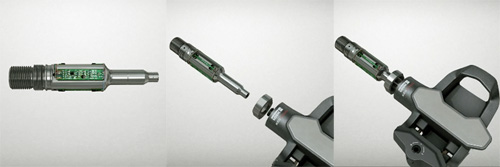“Hang on guys, I need to check my pedal sensors.” This is a refrain you might just be hearing on a training ride in the not too distant future. Bicycle pedal-maker Look and fitness-watch company Polar have combined forces to build the Polar Look Keo Power clipless pedal system. It will measure a cyclist’s power output and cadence via sensors and gauges built in the pedal spline and on the crank arm.

To be sure, other systems have performed these duties in the past. But the Look/Polar pedal, which comes out next spring, does so in a system that’s integrated into the pedals and thus easily swappable between bikes. There are a touted eight individual gauges in each pedal to boost measurement accuracy, Polar cites. The cost for all this embedded technology? Word is the pedals will run somewhere near $2,000!
Tour de France riders and the pro circuit are candidate for the system. But Look and Polar believe common cycling nuts will buy in, too. For the affluent consumers who do, the pedals will transmit information wirelessly to one of Polar’s compatible cycling computers for data readout on a small screen. Watts will be measured from both right and left legs individually, which can help a rider perfect his or her technique and “optimize their cycling economy,” as Polar puts it.
Just like any pedal, the Keo Power pedals and sensors can be switched to a different bike quickly and will mount on any crankset. We at GearJunkie have not had the chance to test this product yet, but will in the near future. The pedals, as noted, will hit shelves some time in spring 2011 and have a price tag that is officially TBD.

Not to be outdone, GPS maker Garmin unveiled news this fall of its own plans to come into this same market. In September, Garmin Ltd. acquired MetriGear Inc., maker of a pedal-based product that debuted in 2009. MetriGear, based in Silicon Valley, Calif., gained notice last year when it introduced its Vector technology, which integrated force and motion sensors into the spindles of bicycle pedals. A distinguisher is that the power meter parts are all inside the pedal, with nothing exposed on the outside.
Garmin, which has a line of GPS-enabled cycling computers, will soon integrate MetriGear’s pedal technology into its product line to offer cadence, power, individual right- and left-leg readouts, and other metrics over time. Details on pricing and product specifics from Garmin are forthcoming.





